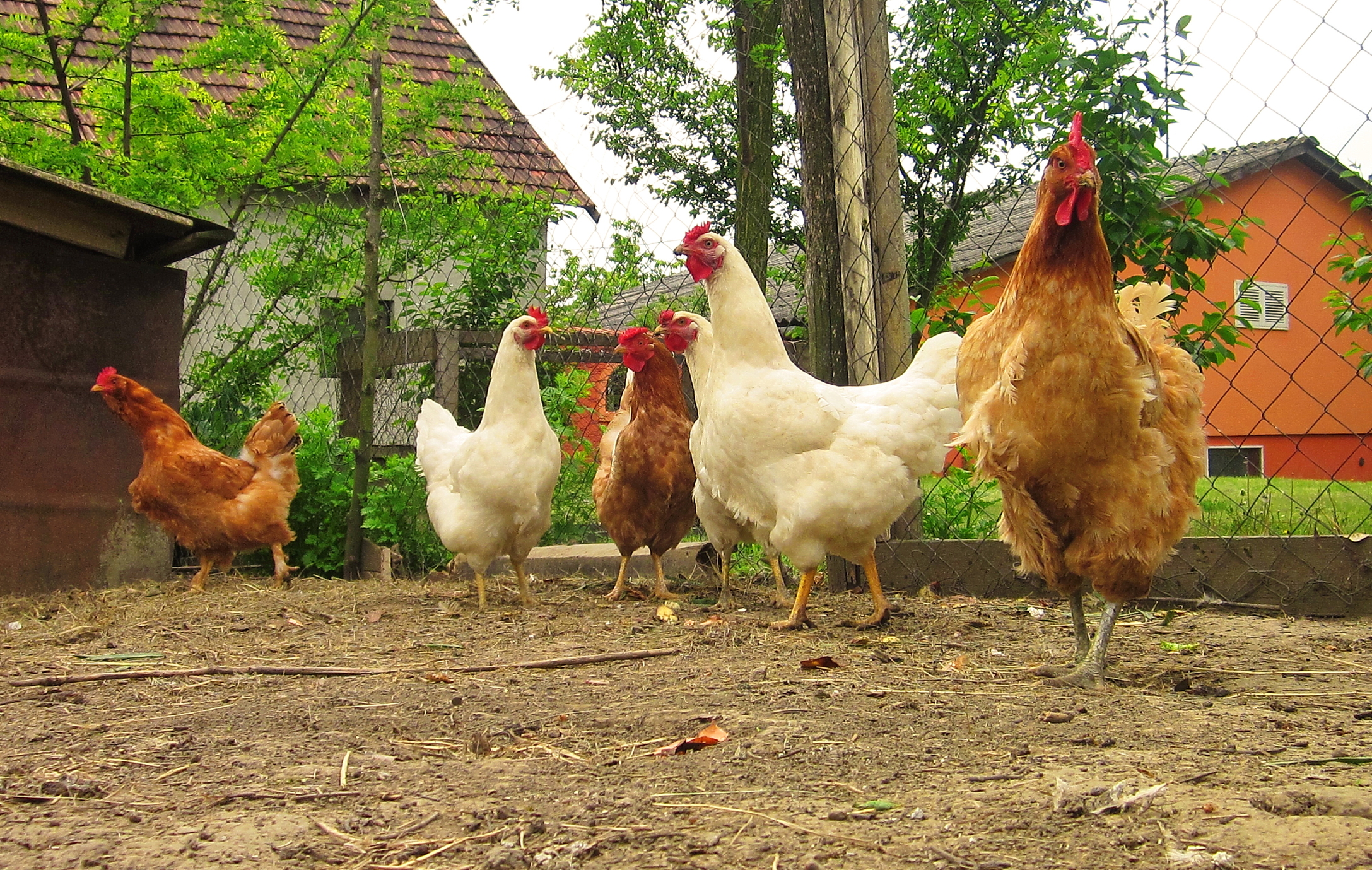Updated October 2025: This comprehensive guide has been updated with the latest information on raising chickens for homesteading in 2025, including modern coop technology, updated cost analysis, and current best practices.
Do you have chickens on your homestead? Whether you’re considering getting your first flock, are already an experienced chicken keeper, or are evaluating whether chickens are truly worth the investment, this guide is for you.
Chickens are among the most valuable additions to any homestead, providing multiple benefits that extend far beyond fresh eggs. While their feed and housing require upfront investment and their care demands daily attention, these remarkable birds truly “earn their keep” in ways that might surprise you. In 2025, with rising food costs and increasing interest in self-sufficiency, backyard chickens have become more popular than ever.
Let’s explore the eight compelling ways chickens can transform your homestead:
1. Natural Pest Control: Your Garden’s Best Defense
Chickens are voracious insect eaters, consuming ticks, beetles, grasshoppers, and other garden pests that would otherwise damage your crops. A small flock of 4-6 chickens can significantly reduce pest populations in a quarter-acre area.
How it works: Allow your chickens supervised access to your garden area (either free-ranging with portable fencing or in a chicken tractor). They’ll systematically hunt down insects, grubs, and larvae, providing chemical-free pest management. This natural approach saves money on pesticides while keeping your garden organic.
2025 Update: Many homesteaders now use mobile chicken coops (chicken tractors) that can be moved around the property, allowing chickens to systematically clear pests from different areas while preventing overgrazing.
2. Premium Fertilizer Production: Black Gold for Your Garden
Chicken manure is one of the highest-quality fertilizers available, rich in nitrogen, phosphorus, and potassium. A single chicken produces approximately 1 cubic foot of manure every six months.
Important note: Fresh chicken manure is too “hot” (high in nitrogen) to apply directly to plants. Instead, compost it for 3-6 months, mixing it with carbon-rich materials like leaves, straw, or wood shavings at a ratio of approximately 1 part manure to 3 parts carbon material.
The result: Nutrient-dense compost that dramatically improves soil quality and plant growth. Many homesteaders report 30-50% increases in garden yields after incorporating composted chicken manure into their soil management routine.
Related: How to Correct Nitrogen Deficiency in Your Soil
3. Fresh, Nutritious Eggs Daily
This is the benefit most people think of first, and for good reason. Home-raised eggs are nutritionally superior to store-bought alternatives, with higher levels of omega-3 fatty acids, vitamins A and E, and beta-carotene when chickens have access to pasture and a varied diet.
Production expectations: Most laying breeds produce 250-300 eggs per year during their prime (ages 1-3). That means a flock of just 4 hens can provide your family with 20-24 eggs per week.
Cost savings in 2025: With organic, pasture-raised eggs now costing $6-8 per dozen in many areas, a small backyard flock can save a family $500-800 annually while providing superior nutrition and food security.
Bonus: You control what your chickens eat, ensuring your eggs are truly organic, antibiotic-free, and produced humanely. The deep orange yolks and rich flavor of home-raised eggs are incomparable to store-bought varieties.
4. Sustainable Meat Production
Beyond eggs, chickens provide high-quality protein through meat production. While many homesteaders grow attached to their laying hens, raising separate meat birds (broilers) or culling older hens past their laying prime ensures your flock remains productive while providing your family with chicken meat.
Dual-purpose breeds: Consider heritage breeds like Rhode Island Reds, Plymouth Rocks, or Orpingtons that provide both eggs and meat. These birds may grow slower than commercial broilers, but they’re hardier, better foragers, and more suitable for sustainable homesteading.
Meat bird option: Cornish Cross chickens reach processing weight (5-7 lbs) in just 8-10 weeks, making them efficient meat producers if you’re willing to raise separate flocks for eggs and meat.
Related: Why Raise Meat Chickens on Your Homestead
5. Free Garden Tilling and Soil Aeration
Chickens are natural scratchers, constantly using their feet to dig and turn soil in search of insects, seeds, and grit. This instinctive behavior provides free labor for your homestead.
How to leverage this: After harvest, allow your chickens into garden beds. They’ll scratch through the soil, breaking up clumps, aerating compacted areas, and incorporating organic matter. They’ll also eat weed seeds and remaining pest larvae, preparing your beds for the next planting season.
Chicken tractor method: Use a mobile coop to systematically till different areas of your property. Move the coop every 2-3 days to prevent overworking any single area. This method is particularly effective for preparing new garden beds or renovating tired soil.
6. Entertainment and Stress Relief
Don’t underestimate the therapeutic value of chickens. These birds have distinct personalities, establish social hierarchies (the famous “pecking order”), and engage in surprisingly entertaining behaviors.
Mental health benefits: Studies have shown that caring for animals reduces stress and anxiety. Many homesteaders report that their morning routine of feeding chickens and collecting eggs provides a peaceful, grounding start to the day.
Unique personalities: You’ll quickly learn to differentiate your birds by their behaviors, vocalizations, and quirks. Some chickens are bold and curious, others shy and cautious. Watching their interactions and daily routines provides endless entertainment.
Family activity: Children especially enjoy observing chicken behavior, naming individual birds, and participating in their care. It’s a screen-free activity that connects kids with nature and food production.
7. Teaching Responsibility and Life Skills
Chickens are ideal for teaching children (and adults) about responsibility, animal husbandry, and where food comes from. Unlike larger livestock, chickens are manageable for children as young as 6-7 years old with supervision.
Age-appropriate tasks:
- Ages 6-8: Collecting eggs, filling water containers (with help), observing and reporting unusual behavior
- Ages 9-12: Complete feeding and watering, basic coop cleaning, identifying signs of illness
- Ages 13+: Full coop maintenance, health monitoring, record keeping, flock management decisions
Life lessons: Caring for chickens teaches consistency (they need daily attention), consequences (forgotten water means stressed birds), and the realities of food production (including the difficult decision of culling unproductive or sick birds).
Related: 5 Mistakes First-Time Chicken Farmers Make
8. Efficient Kitchen Scrap Disposal
Chickens are omnivores and will eat a wide variety of kitchen scraps, reducing household waste while supplementing their diet. A typical family of four can divert 200-300 pounds of food waste from landfills annually by feeding it to chickens.
Safe foods for chickens: Vegetable scraps, fruit peels and cores, cooked rice and pasta, bread (in moderation), leafy greens, melon rinds, and most table scraps.
Foods to avoid: Chocolate, avocado, raw beans, moldy food, anything high in salt or sugar, and citrus (in large quantities).
Important: Kitchen scraps should supplement, not replace, a balanced chicken feed. Laying hens require specific nutrition (16-18% protein, calcium for shell production) that scraps alone cannot provide. Use scraps as treats and variety, not as primary nutrition.
2025 composting integration: Many modern homesteaders use a three-stage system: chickens get first pick of scraps, uneaten portions go to compost bins, and finished compost returns to the garden. This creates a closed-loop system that maximizes efficiency.
The Bottom Line: Are Chickens Worth It?
For most homesteaders, the answer is a resounding yes. While chickens require daily care and upfront investment (expect $500-1,000 to get started with a coop, fencing, and initial flock), they provide multiple returns on that investment through eggs, meat, fertilizer, pest control, and intangible benefits like education and stress relief.
Getting started in 2025: Begin with 4-6 hens of a hardy, dual-purpose breed. Research your local regulations (many urban and suburban areas now allow small flocks), invest in predator-proof housing, and connect with local chicken-keeping communities for support and advice.
The skills you develop and the food security you gain from keeping chickens are invaluable components of a resilient, self-sufficient homestead.
Ready to start your homesteading journey? Subscribe to our newsletter for weekly tips on raising chickens, growing your own food, and building a more self-reliant lifestyle.
Last updated: October 2025


